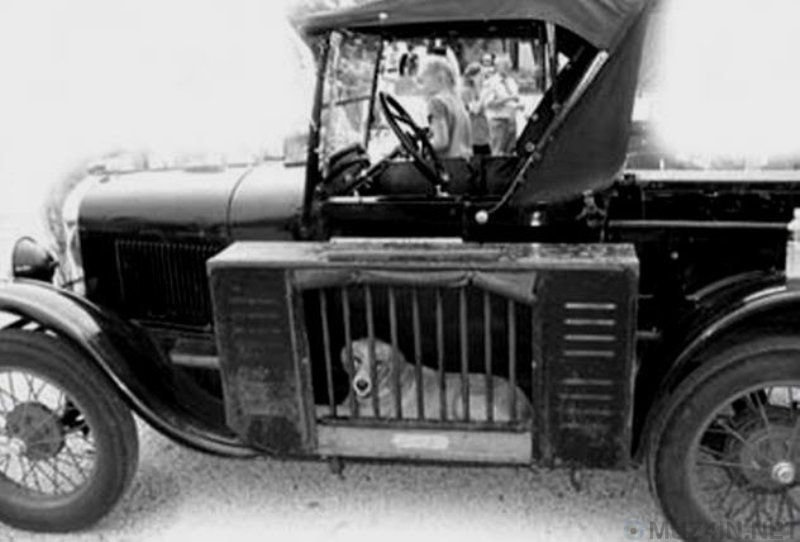Early 20th-Century Safety-Ignorant Ways to Transport a Dog by Car
Ignorance makes design really easy!
Back when cars were newfangled, we were completely ignorant of their hazards. We drove around with freaking plate-glass windows until safety glass was invented around 1937. Seat belts weren't even offered as an option until 1949, and no one wanted them. They weren't even required in U.S. cars until 1966.
It's unsurprising, then, that this was advertised as a good way to transport dogs by car in the 1920s:



In the 1930s, as cars became more properly enclosed and there actually was room to put a dog in the back, you still had this option:

It wasn't until the 2000s that we had the ultimate dog-friendly car, the Honda Element, which even had a special Dog Friendly package premiered in 2009. More recently, Nissan rolled out a dog-friendly vehicle (concept only, boo) in 2017.
-
o1Favorite This
-
Q2Comment
K
{Welcome
Create a Core77 Account
Already have an account? Sign In
By creating a Core77 account you confirm that you accept the Terms of Use
K
Reset Password
Please enter your email and we will send an email to reset your password.


Comments
I don't understand, how are these unsafe other than getting t-boned? It is held securely to the car, what's the problem? I think you don't realize there was no interstate highway system in the 20s/30s. Asphalt was the exception, not the rule. Cars themselves being able to exceed 60mph were, again, the exception. How is plooting along at 30 mph with a dog's head hanging out the window different? Dinky is not being tied to the bumper and going 60 in 1930. I'm guessing a lot of dogs could run faster than cars in the 30s.
Yeah, what harm could come from strapping a dog to the outside of a car in an era when things we take for granted, such as standardized stop sign designs, and rules of the road had yet to be established? Heaters were often optional equipment (if available at all) during this era, so it's not like putting Fido on the fender would subject him to severe cold in the winter, when being inside the car could only protect him from windchill.